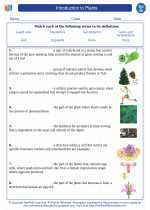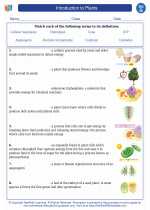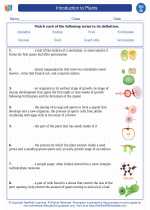Biodiversity
Biodiversity refers to the variety of life forms on Earth, including the different species of plants, animals, and microorganisms, the genetic differences within these species, and the ecosystems they form. It is a measure of the health of ecosystems and is important for the stability and sustainability of our planet.
Levels of Biodiversity
There are three main levels of biodiversity:
- Species Diversity: This refers to the variety of different species in a particular area. High species diversity is important for the stability of ecosystems as different species play different roles in the ecosystem.
- Genetic Diversity: This refers to the variety of genes within a species. Genetic diversity is important as it allows species to adapt to changing environments and provides a pool of genetic resources for future generations.
- Ecosystem Diversity: This refers to the variety of different ecosystems on Earth. Ecosystem diversity is important as it provides different habitats for species and contributes to the overall resilience of the biosphere.
Importance of Biodiversity
Biodiversity is important for a number of reasons:
- Economic Value: Biodiversity provides us with resources such as food, medicine, and materials for industry. It also contributes to tourism and recreation.
- Ecological Value: Biodiversity is essential for the functioning of ecosystems, including nutrient cycling, pollination, and pest control.
- Cultural Value: Biodiversity has cultural and aesthetic significance, and many people derive spiritual and emotional value from nature.
- Scientific Value: Biodiversity provides valuable genetic and ecological information for scientific research and discovery.
Threats to Biodiversity
Unfortunately, biodiversity is under threat from a variety of human activities, including habitat destruction, pollution, climate change, over-exploitation of natural resources, and the introduction of invasive species.
Conservation of Biodiversity
Conserving biodiversity is essential for the health of our planet. Conservation efforts include the establishment of protected areas, sustainable management of natural resources, and the promotion of sustainable development practices.
Study Guide
If you're studying biodiversity, here are some key points to focus on:
- Understand the different levels of biodiversity (species diversity, genetic diversity, ecosystem diversity) and why each is important.
- Learn about the value of biodiversity, including its economic, ecological, cultural, and scientific significance.
- Be familiar with the threats to biodiversity and the importance of conservation efforts.
- Study specific examples of biodiversity hotspots and the unique species found in these areas.
- Consider the role of human activities in contributing to both the decline and conservation of biodiversity.
Remember to also familiarize yourself with specific case studies and examples to illustrate key points about biodiversity.
Good luck with your studies!
[Biodiversity] Related Worksheets and Study Guides:
.◂Biology Worksheets and Study Guides High School. Introduction to plants

 Worksheet/Answer key
Worksheet/Answer key
 Worksheet/Answer key
Worksheet/Answer key
 Vocabulary/Answer key
Vocabulary/Answer key
 Vocabulary/Answer key
Vocabulary/Answer key
 Vocabulary/Answer key
Vocabulary/Answer key
 Vocabulary/Answer key
Vocabulary/Answer key
 Vocabulary/Answer key
Vocabulary/Answer key
